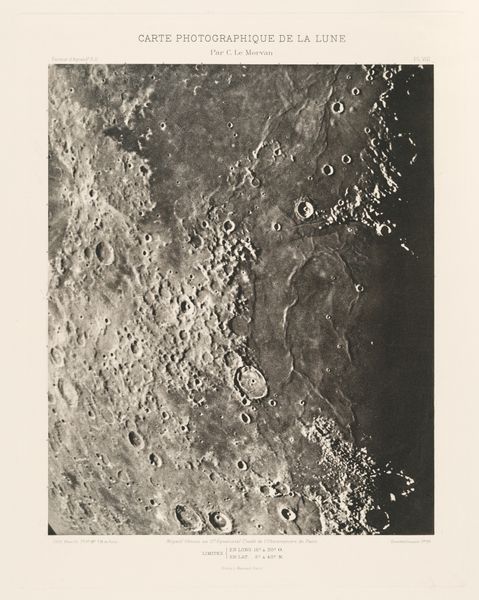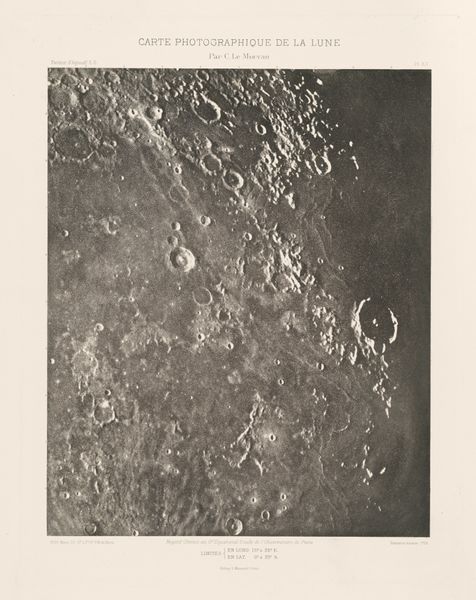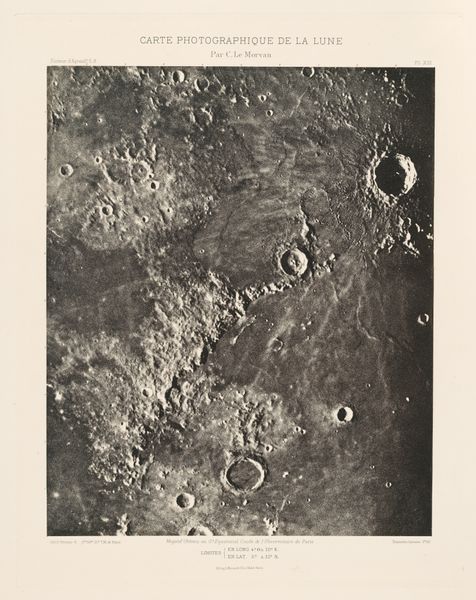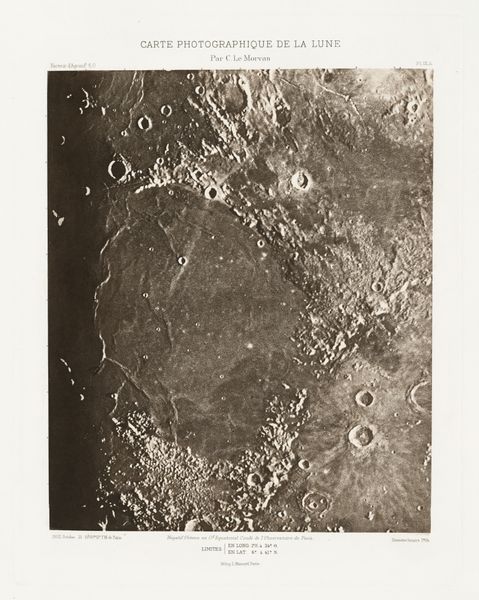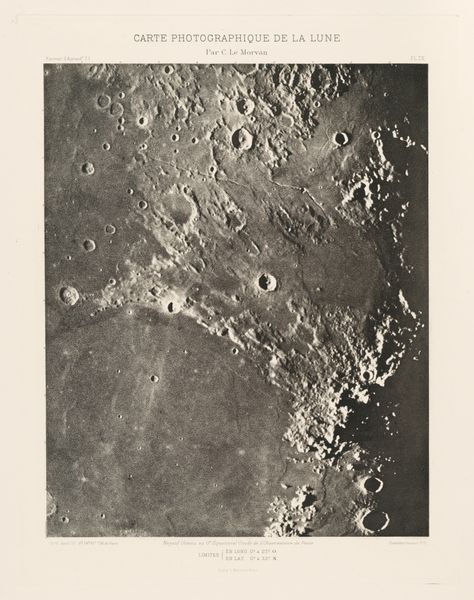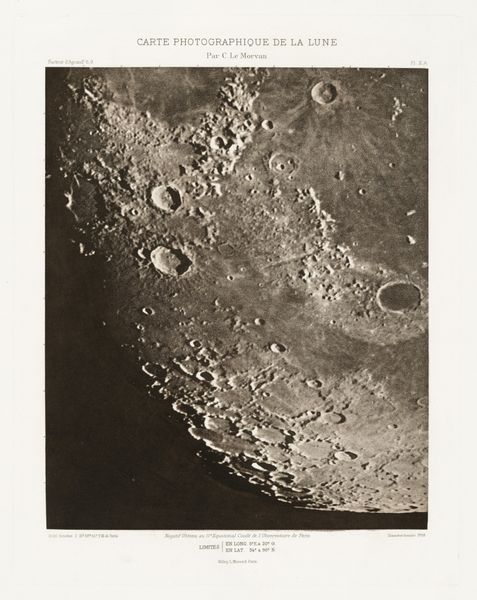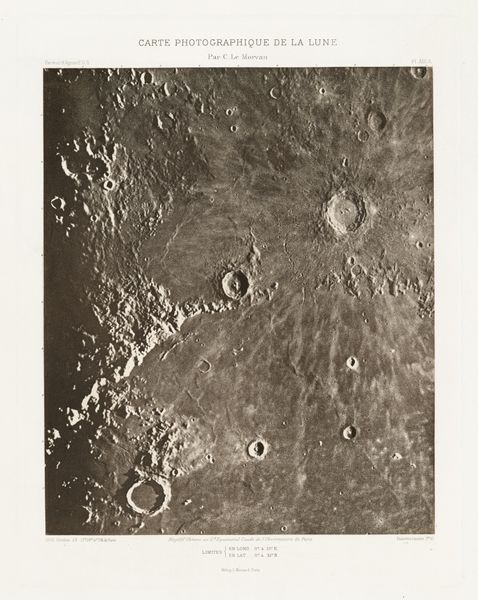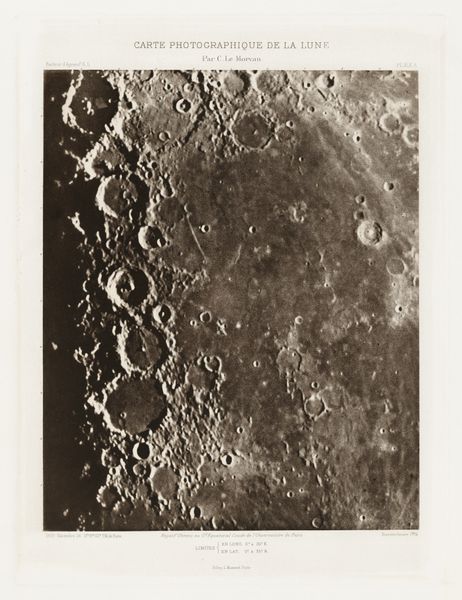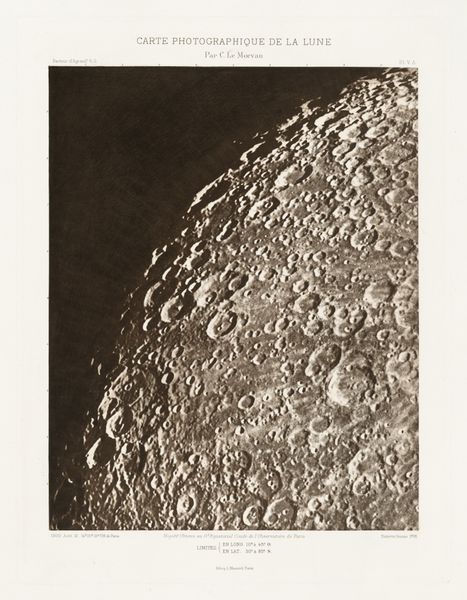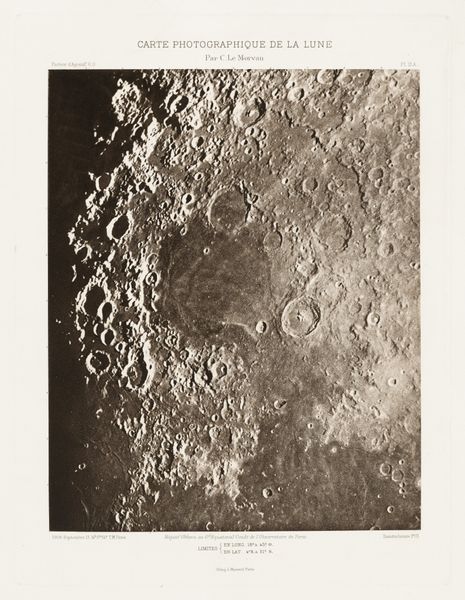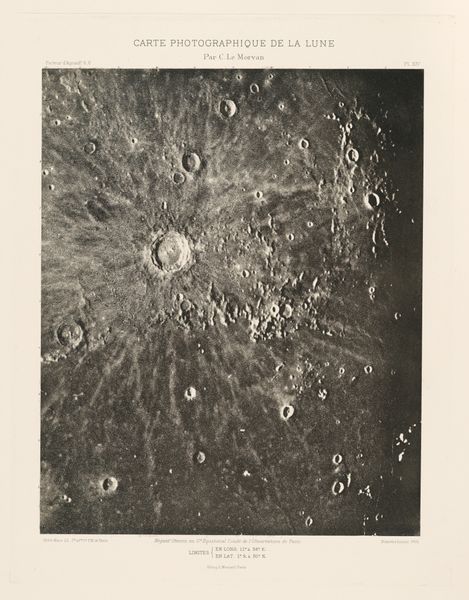
Carte photographique de la lune, planche XIX (Photographic Chart of the Moon, plate XIX) Possibly 1903 - 1914
0:00
0:00
print, photography, photomontage
#
still-life-photography
# print
#
landscape
#
photography
#
geometric
#
photomontage
Dimensions: image: 31.1 × 25.5 cm (12 1/4 × 10 1/16 in.) plate: 38.9 × 29.5 cm (15 5/16 × 11 5/8 in.) sheet: 49 × 37.9 cm (19 5/16 × 14 15/16 in.) tissue: 42.55 × 37.47 cm (16 3/4 × 14 3/4 in.)
Copyright: National Gallery of Art: CC0 1.0
Curator: I am struck immediately by the sheer starkness of this lunar landscape—a photographic chart rendered in cool grays, like an ancient memory surfacing in the present. Editor: And that, in essence, is what it is: "Carte photographique de la lune, planche XIX (Photographic Chart of the Moon, plate XIX)", by C. Le Morvan, most likely made sometime between 1903 and 1914. It is an intriguing print, possibly a photomontage. Curator: The geometric shapes formed by the craters carry so much weight. It feels almost like gazing into a collective dream. Don't you get a primal sense of recognition, maybe from stories shared around a fire in some deep past? Editor: It does evoke the uncanny. This wasn't a satellite image, of course; it was painstakingly constructed from observations. Knowing the work involved gives it an added dimension—human curiosity and dedication writ large across the face of the moon. I keep looking for a "man in the moon," a humanizing presence in all this desolation. Curator: The lack of atmosphere heightens that desolation. These aren't just impact zones; each crater could symbolize emotional or psychological impact as well. In psychoanalytic terms, each mark represents something suffered, something lost. It reflects not only the moon's biography but our own collective past traumas, visible, but silent. Editor: True, there’s a brutal honesty to it—unfiltered information about damage over unimaginable timescales. However, for every shadow, there’s reflected light. Those geometric formations—the rims of the craters, the way they overlap—that also conveys resilience. Something about the scene speaks not just of loss but of an enduring and unchanging witness to all our struggles down here. Curator: Precisely! The geometric quality is reassuring. It reveals a sense of permanence, something that predates and will outlast us. This lunar face becomes a mirror, reflecting our fleeting existence, our small dramas played out beneath this immense, unchanging eye. It prompts questions about time, scale, and ultimately our own significance. Editor: Exactly. Looking at the picture again, one might even forget it is an image of the Moon. It feels almost allegorical—not of other-worldly realms, but some representation of what humans do, creating a sense of "order" on surfaces they encounter to make sense of the immensity of what they find. Thanks for lending that perspective. Curator: My pleasure, always insightful.
Comments
No comments
Be the first to comment and join the conversation on the ultimate creative platform.
